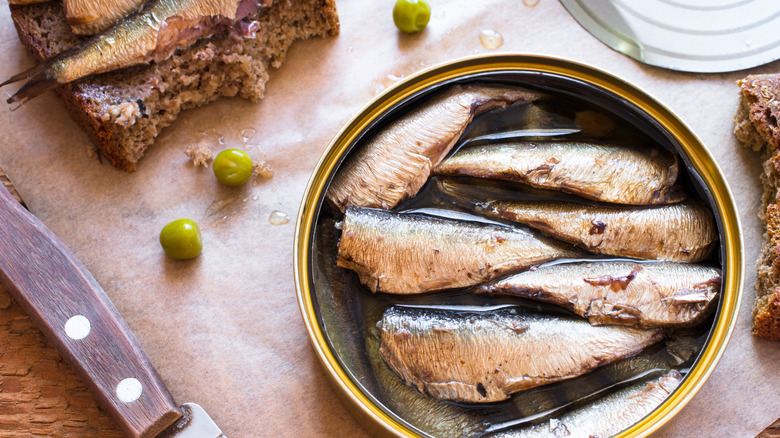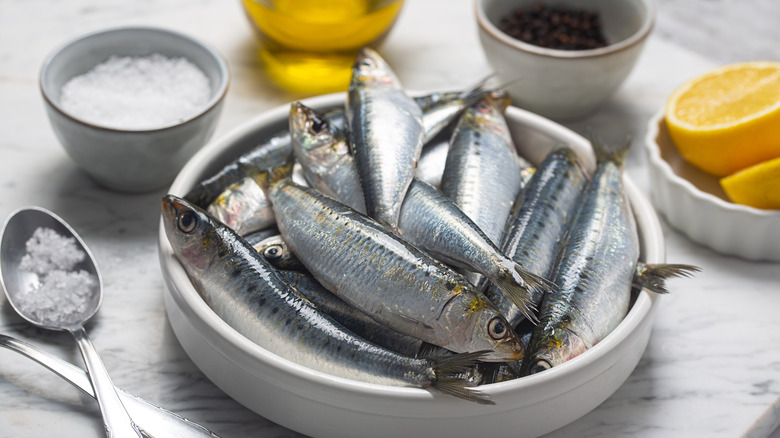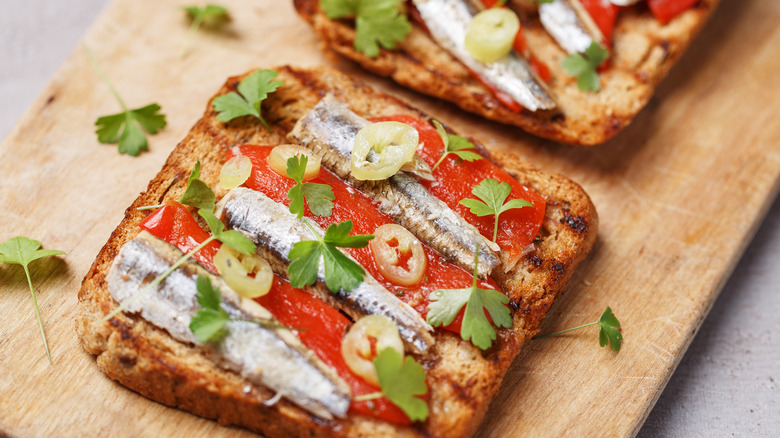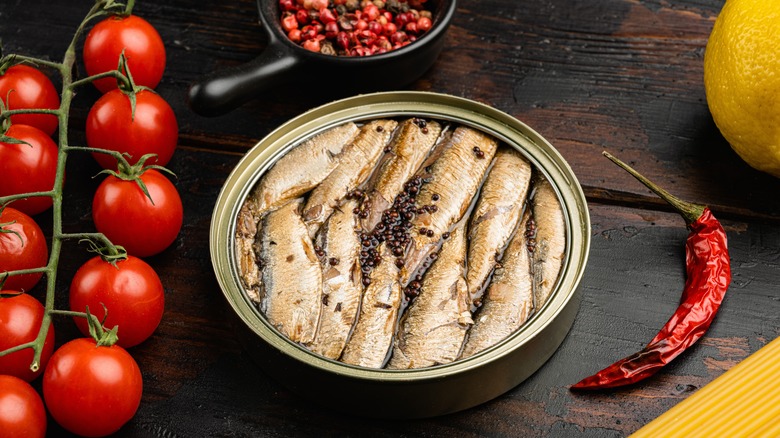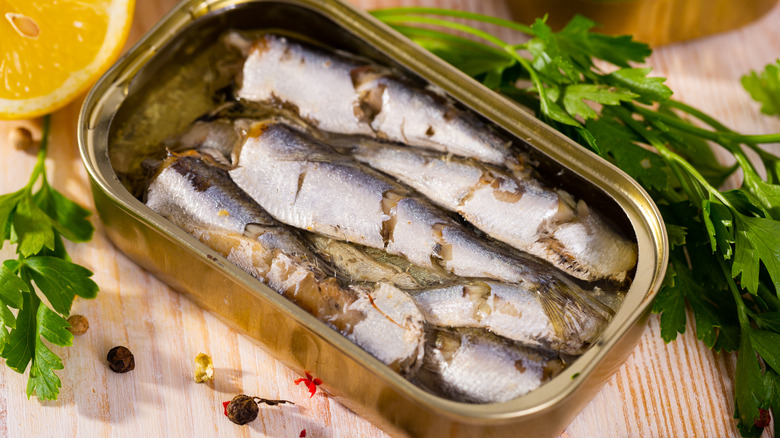How To Eat Sardines, For The Uninitiated
Sardines are the gateway to the wonderful world of conservas, an Iberian cuisine defined by canned seafood. The sardine is the humblest member of this group, a tiny but mighty fish that's been enjoyed for centuries in the Mediterranean. While the sardine is a staple food that can trace all the way back to ancient Greece, the invention of canned sardines is more recent in the historical timeline.
In the early 1800s, the French were the first to begin canning sardines, using an old Brittany fisherman recipe, where fried sardines were preserved in clay jars. Soon Spain and Portugal surpassed France as producers of canned sardines, eventually becoming the cultural heartland of canned fish in general. Now, the canned sardine business is worth over $7.9 billion and only growing, making it a ubiquitous part of the grocery store, per PR Newswire.
Still, to those who are new to the canned fish scene, it can be daunting to know what to do with these little fish. Don't worry; we're here to walk you through the many ways to enjoy this fish, taking it from tin to table in a flash.
How to prep your sardines
One of the many wonderful features of cooking with sardines is that very little prep is required. You don't need to debone or skin them, as both of these elements are edible on a sardine. In fact, you probably won't be able to notice that the small and soft bones are even there. In addition to that, you can also skip the step of rinsing, cleaning, and cooking your sardines, thanks to the way they're processed before being canned.
During processing, sardines have their head, tail, and other undesirables removed before being meticulously washed to remove any impurities. From there, the fish is steamed, smoked, and canned, with a final safety step of pressure-cooking, which sterilizes and seals the fish in. By the time you purchase your sardines and crack a can open, all the work has been done for you in regard to food prep.
Best recipes to make with your sardines
Classically, sardines can be enjoyed with a cracker, fork, and maybe a dash of hot sauce or lemon juice. But to confine the culinary uses of this tinned fish to just that is to sell sardines way short. Sardines are extremely versatile, lending themselves well to a humble snack, hearty lunch, or fancy dinner.
For a dinner that packs a seafood punch, try garlic and herby sardine pasta. Powered by high-quality oil-packed sardines and starchy bucatini, this dish comes together surprisingly quickly for such a sophisticated flavor profile. For a more simple meal, consider adding chopped-up sardines to a large house salad or even as a replacement for tuna in a Niçoise salad. In fact, sardines work very well with tuna, so try adding it to your tuna salad as well.
For the ultimate no-fuss dish, consider turning your can of sardines into a tartine, the French open-faced sandwich that promises a gourmet experience on a single slice of toast. This sardine tartine with sweet and sour onions and pine nuts is a great place to start, but you can also go for a more rustic approach. Tomatoes, mayo, sardines, and something a touch briny, like capers or olives, can be a stunning combo all on its own.
Brands to look for
Now that you have some culinary inspiration for your sardines, it's time to decide which brands are ideal for purchase. First, you must decide what you're looking for from your sardines. If you want something plain where the sardine's nature flavor shines, reach for a sardine packed in water and oil with no added flavors. The oil-packed sardines will be richer, with the water-packed fish feeling a bit drier.
As for trusted brands, reach for Portugal's Bela and Nuri for particularly high-quality sardines. Other high-brow brands like California-based Wild Planet and Matiz Sardines also offer solid options. But generic, more low-cost brands are nothing to sneer at. After all, sardines have always been intended as a cost-effective and easy meal. Beach Cliff and Season are common brands you can find at the grocery store that still sport quality taste.
If you're looking for sardines with a more flavorful punch, look for ones packed in sauces or aromatics. Sardines infused with lemon, hot sauce, or tomato sauce are typical, but you can also find some with mustard or harissa paste. For the novice, start with the simple oil-packed sardine and work your way up to these more complex cans.
How to store your sardines
Like many other canned goods, unopened sardines can be viable for a long time in the pantry. Most have a use-by date of 3 to 5 years, although they'll normally be safe to eat even longer than that if properly stored at 70 degrees Fahrenheit or lower (via Still Tasty). Still, if you're suspicious of whether your batch has gone bad, use your eyes and nose. If any off-smells have developed, it's better to toss them. And if you see any mold? Obviously, that's a hard pass.
An open can of sardines is a different matter. According to the National Library of Medicine, a study found that covered and stored in a refrigerator, a can of open sardines was safe to eat for up to one week. However, the taste quality was best for oil-packed sardines within one day of opening and within three days for sardines packed in acidic tomato sauce. So for optimal flavor, strike while the iron's hot.
